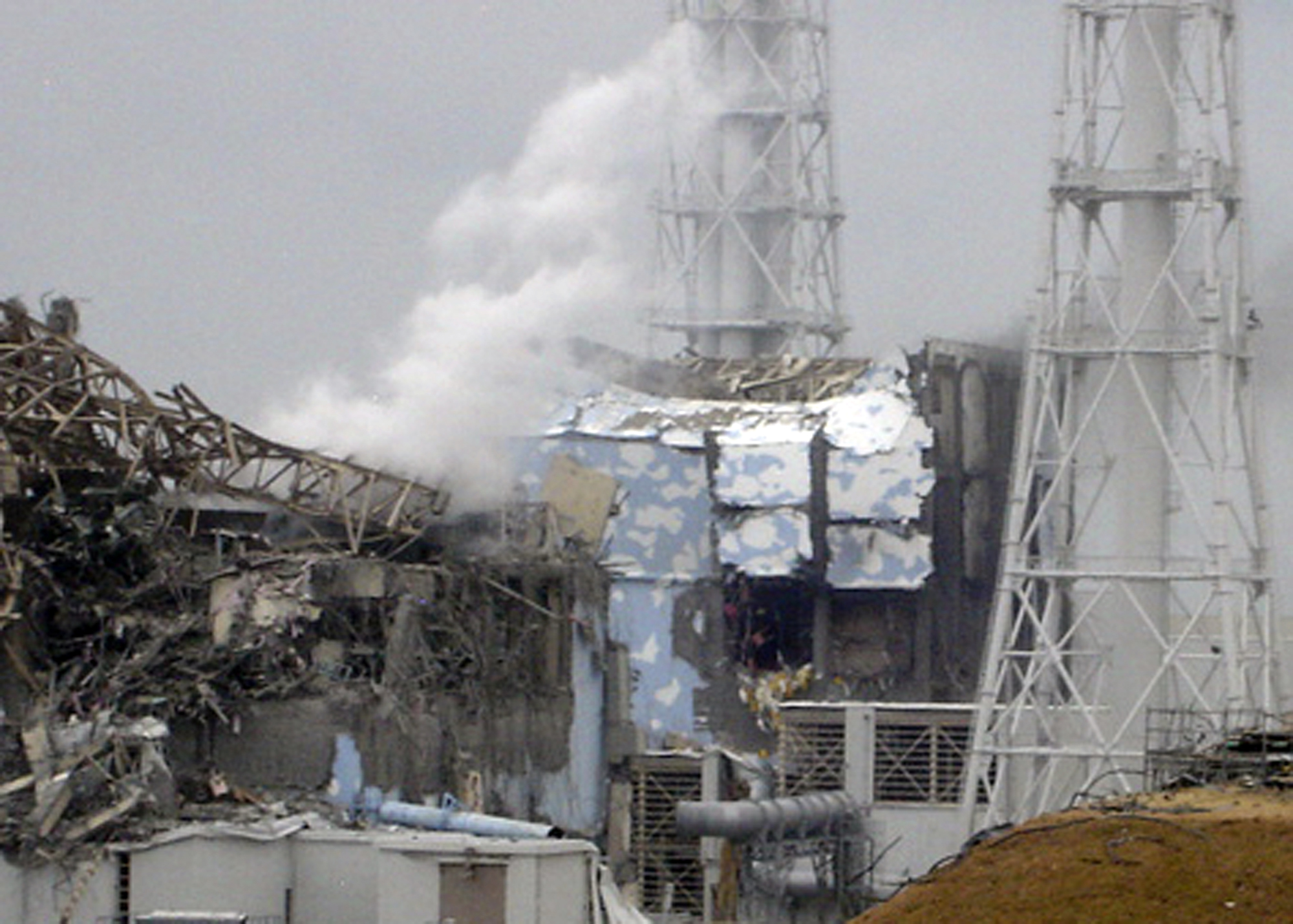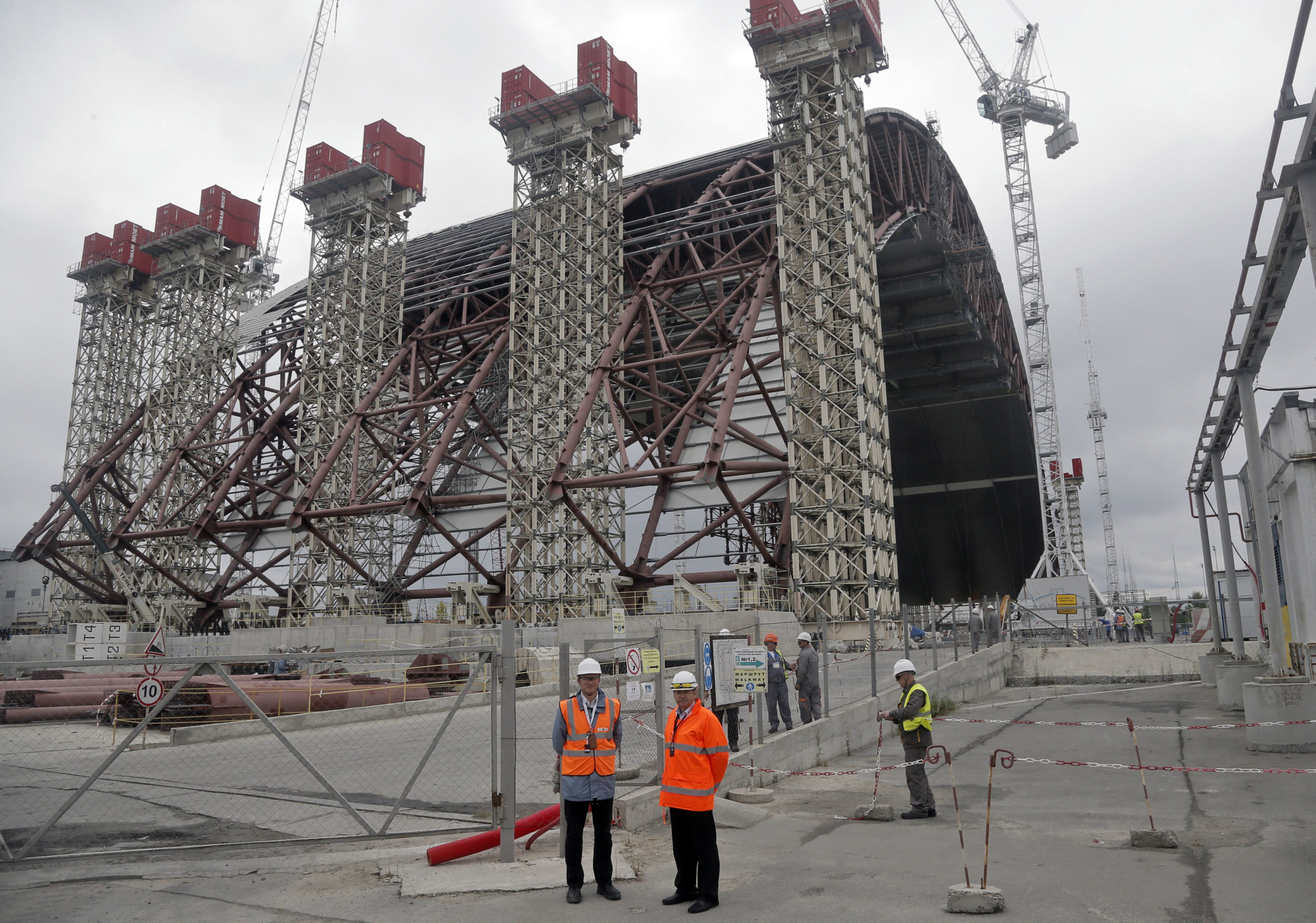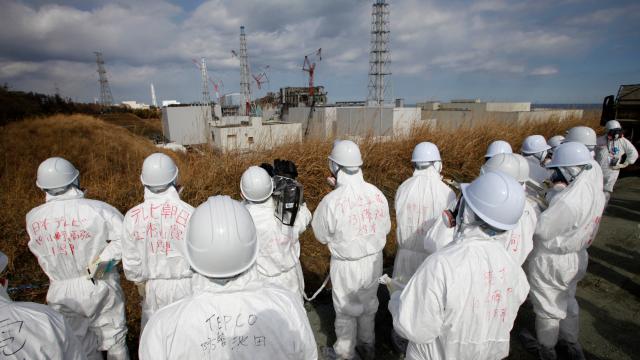As the immediate aftermath of the Fukushima nuclear disaster has passed, Japan is faced with another conundrum: Where to store thousands of tons of radioactive soil that have been harvested from around the region. This week, officials unveiled a $US970 million plan to build a massive storage facility to house the stuff.
The plan was recommended by a long-running government panel, which suggested building the storage facilities in one of three nearby towns — Futaba, Okuma and Naraha — at a cost of almost a billion dollars. The (roughly) 13sqkm site would hold multiple facilities, each containing soil of differing levels of contamination.

The damaged Reactor 3 at Fukushima. Image: Tokyo Electric Co.
But there’s another reason to build the site. Many Fukushima homeowners still remain in temporary disaster housing today, because they can’t buy new homes without selling their property in the contaminated zone. These storage facilities would allow Japan’s government to effectively buy back that real estate — letting people move on with their lives.
At the same time, plenty of people who have returned to their homes are dealing with radioactive soil in their own backyards — literally. A September blog post from a Fukushima resident named Akiko Fukami describes the process of having workers dig a massive hole in the backyard, where they buried bags of radioactive soil in an attempt to decontaminate Fukami’s house. “I just want people outside Fukushima to know that there are people here doing their best to protect themselves and families from radiation to live a normal and decent everyday life,” she wrote.

The new protective structure at Chernobyl, which Japanese officials recently toured. Image: AP Photo/Efrem Lukatsky.
As we’ve seen in Chernobyl, where a brand-new steel “sarcophagus” is being built over Reactor 4 as we speak, the responsibility of protecting civilians from nuclear waste will be handed down, from generation to generation, for decades to come. The facility in Fukushima would, in theory, only be stable enough to hold the soil for roughly 30 years — after that, the next generation of scientists will hopefully have come up with a better solution. [Japan Times, PhysOrg]
Lead image: AP
